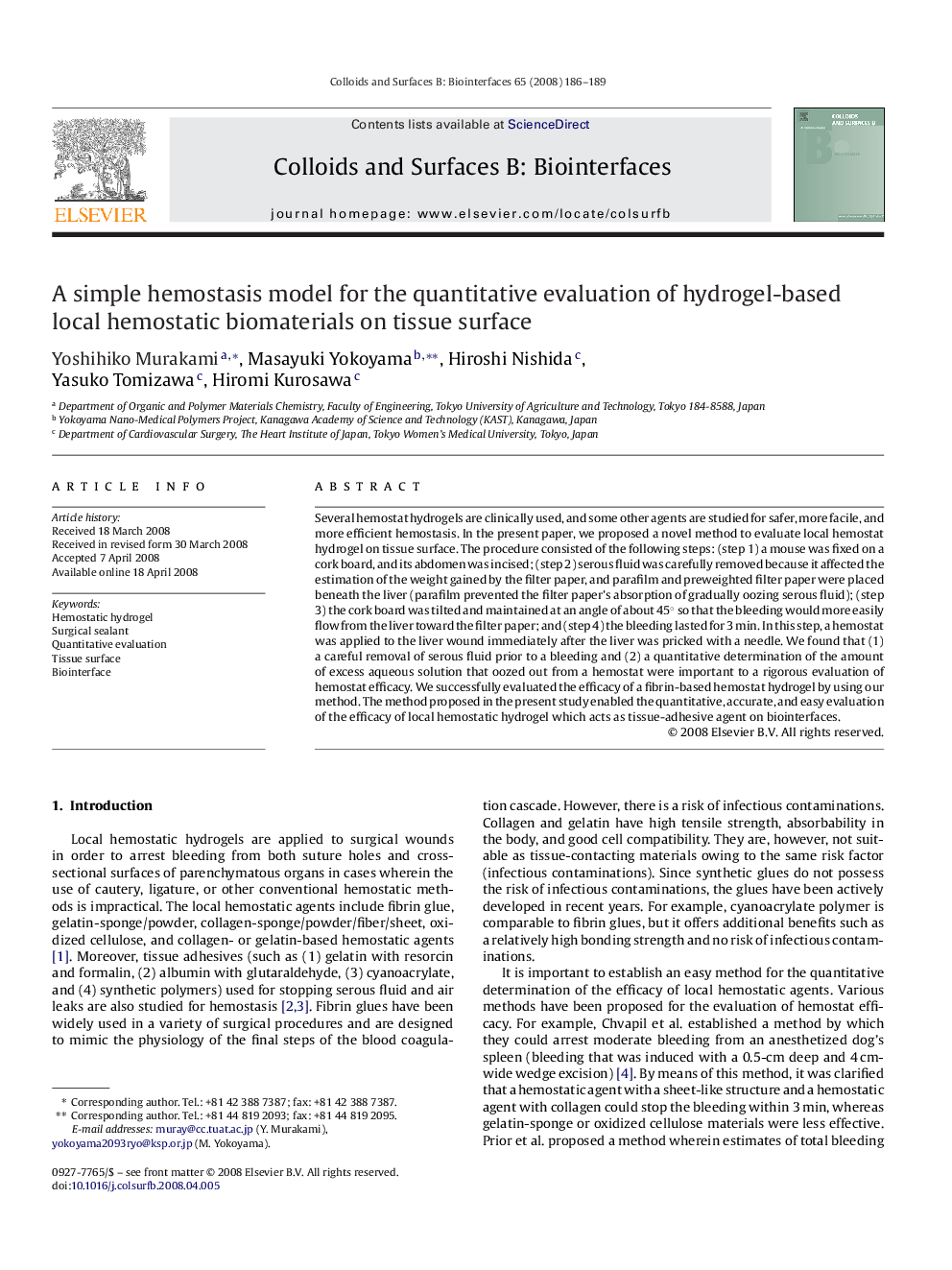| Article ID | Journal | Published Year | Pages | File Type |
|---|---|---|---|---|
| 602748 | Colloids and Surfaces B: Biointerfaces | 2008 | 4 Pages |
Several hemostat hydrogels are clinically used, and some other agents are studied for safer, more facile, and more efficient hemostasis. In the present paper, we proposed a novel method to evaluate local hemostat hydrogel on tissue surface. The procedure consisted of the following steps: (step 1) a mouse was fixed on a cork board, and its abdomen was incised; (step 2) serous fluid was carefully removed because it affected the estimation of the weight gained by the filter paper, and parafilm and preweighted filter paper were placed beneath the liver (parafilm prevented the filter paper's absorption of gradually oozing serous fluid); (step 3) the cork board was tilted and maintained at an angle of about 45° so that the bleeding would more easily flow from the liver toward the filter paper; and (step 4) the bleeding lasted for 3 min. In this step, a hemostat was applied to the liver wound immediately after the liver was pricked with a needle. We found that (1) a careful removal of serous fluid prior to a bleeding and (2) a quantitative determination of the amount of excess aqueous solution that oozed out from a hemostat were important to a rigorous evaluation of hemostat efficacy. We successfully evaluated the efficacy of a fibrin-based hemostat hydrogel by using our method. The method proposed in the present study enabled the quantitative, accurate, and easy evaluation of the efficacy of local hemostatic hydrogel which acts as tissue-adhesive agent on biointerfaces.
